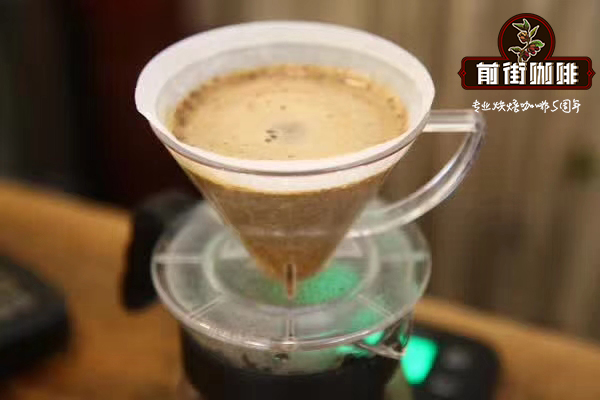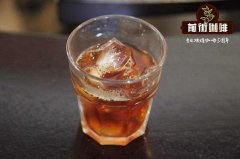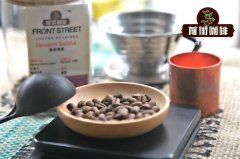Analysis of Coffee Solarization| How is the coffee processed and what flavor does it have?

Professional coffee knowledge exchange more coffee bean information please follow the coffee workshop (Wechat official account cafe_style)
Sun treatment
Sun treatment
The first step
Coffee fruit harvest
Manual or mechanical collection
The second step
Fruit sorting
Artificial or flotation method
The third step
Insolation
Dry directly on the ground or have a special drying ground.
The fourth step
Shelling
When the coffee fruit reaches the appropriate moisture content, it is shelled.
Step five
Storage
Coffee beans are stored as unshelled coffee beans before export.
Advantages
Except for the first step of using water to filter out shoddy beans, the other steps no longer need any water and can be used repeatedly. In areas where water resources are not abundant, this method is amazing!
And because sun-dried beans have irreplaceable special flavor, some excellent farms begin to take sun-dried beans seriously, such as putting them on shelves to prevent pollution and fine selection, so today we can see a lot of high-quality sun-dried coffee beans.
Shortcoming
The sun method depends entirely on the weather, and the dryness of coffee fruit is difficult to control. If the sun is not clean, it is easy to mix with impurities. In the process of the sun, the pulp of the coffee fruit has not been removed, so it is often moldy and rotten. Therefore, in the view of many people, the quality of sun-exposed coffee beans is not controllable and the level is not too high.
Flavor
Although the sun-dried beans are uneven in appearance and vary greatly in color, because the coffee beans ripen naturally inside the fruit and are not disturbed by the external environment, the flavor of the sun-cured coffee beans is more intense, with wine-like fermented taste and sweet taste.
Sun treatment, also known as drying treatment, is the oldest method of refining raw beans. The harvested coffee fruit is screened (manual or mechanical), and then the coffee fruit is spread into a thin layer to be exposed to sunlight. Some producers put the coffee fruit on the brick terrace, while others use special high sun tables. Let the coffee fruit have more air convection, the drying effect will be more uniform. The coffee fruit must be constantly turned during the sun to avoid mildew, overfermentation or decay, and the coffee fruit reaches the appropriate moisture content (depending on the climate, the water content of the coffee fruit can drop to 12% and harden in about 2-4 weeks). The exocarp and hard shell will then be removed and stored by machine. It can be said that this method can be done in one battle, unlike half-sun or water washing beans, which need to go through many repeated procedures to take out the beans.
Sun treatment itself adds some flavor to the coffee and occasionally adds a pleasant taste, but most of the time it is an uncomfortable smell. Due to the lack of water resources in some parts of Ethiopia and Brazil, sun treatment may be the only option for producers. Sun treatment is usually used to produce batches of coffee with very low quality and more unripe fruits in the world. However, some people who choose to use tanning to make high-quality coffee beans will find that solarization is more expensive because it requires more concentration and labor to take good care of these high-quality sun-dried beans.
Sun treatment is characterized by the natural drying of beans hidden in the pulp. Therefore, the quality of the climate has a great impact on beans. What this method fears most is that the return to moisture in case of rain will cause the fruit to breed mold and pollute the beans, and the heavy humidity at night must move the fruit from the pitcher into the room. The color of the sun bean is yellow, and the bean body is prone to missing corners, which is inevitable when the shell machine knocks off the hard shell pulp and sheep skin at one time. However, properly treated sun beans will absorb fructose essence in the drying process, rich fruit aroma, heavy sweetness, alcohol thickness is also better than semi-water or water-washed beans, the only deficiency is that the sour taste of sun beans is lower. And the quality of coffee beans is either good or bad, the difference is very large, so the quality is different, the impression is not good. The most famous sun beans are Ethiopia, Sidamo, Yegashifi, Jinma and Yemeni mocha. In addition, most of the stout beans in Indonesia and Africa are also treated by the sun.
END
Important Notice :
前街咖啡 FrontStreet Coffee has moved to new addredd:
FrontStreet Coffee Address: 315,Donghua East Road,GuangZhou
Tel:020 38364473
- Prev

Introduction to coffee insolation and water washing treatment | what is the difference between coffee washing and tanning?
Professional coffee knowledge exchange more coffee bean information please pay attention to the coffee workshop (Wechat official account cafe_style) tanning (Dry process/Natural method) is the oldest and most primitive treatment of coffee beans, compared with the washing method, this dried coffee is also known as "natural coffee" or "sun-dried coffee", the harvested coffee fruit is directly in the sun
- Next

A brief analysis of what is coffee honey treatment | will honey-treated coffee beans be very sweet? what is the flavor?
Professional coffee knowledge exchange more coffee bean information please follow the coffee workshop (Wechat official account cafe_style) what is honey treatment? Honey treatment, called HoneyProcess or Miel Process, called Honey Coffee, does not mean that coffee beans are covered with honey. The honey here refers to the mucous layer of the coffee pulp. Except for the coffee cherries harvested by peeling machine.
Related
- Beginners will see the "Coffee pull flower" guide!
- What is the difference between ice blog purified milk and ordinary milk coffee?
- Why is the Philippines the largest producer of crops in Liberia?
- For coffee extraction, should the fine powder be retained?
- How does extracted espresso fill pressed powder? How much strength does it take to press the powder?
- How to make jasmine cold extract coffee? Is the jasmine + latte good?
- Will this little toy really make the coffee taste better? How does Lily Drip affect coffee extraction?
- Will the action of slapping the filter cup also affect coffee extraction?
- What's the difference between powder-to-water ratio and powder-to-liquid ratio?
- What is the Ethiopian local species? What does it have to do with Heirloom native species?

